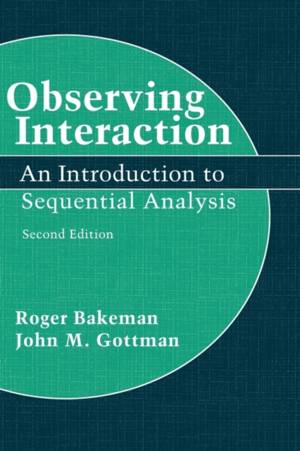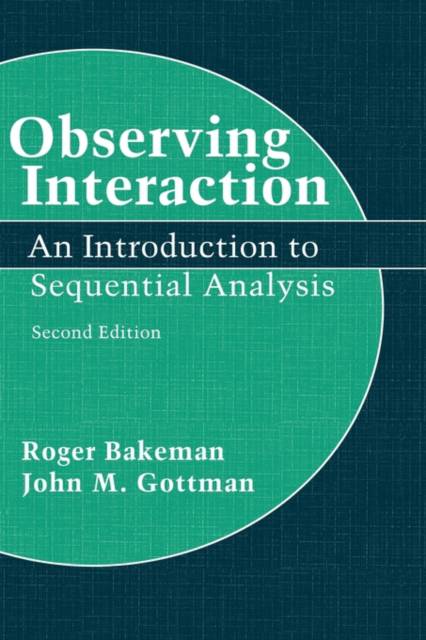
- Afhalen na 1 uur in een winkel met voorraad
- Gratis thuislevering in België vanaf € 30
- Ruim aanbod met 7 miljoen producten
- Afhalen na 1 uur in een winkel met voorraad
- Gratis thuislevering in België vanaf € 30
- Ruim aanbod met 7 miljoen producten
Zoeken
Observing Interaction
An Introduction to Sequential Analysis
Roger Bakeman, John M Gottman
Hardcover | Engels
€ 198,95
+ 397 punten
Uitvoering
Omschrijving
Mothers and infants exchanging gleeful vocalizations, married couples discussing their problems, children playing, birds courting, and monkeys fighting all have this in common: their interactions unfold over time. Almost anyone who is interested can observe and describe such phenomena. However, scientists usually demand more than a desription--they want observations that are replicable and amenable to scientific analysis, while still faithful to the dynamics of the phenomena studied. This book provides a straightforward introduction to scientific methods for observing social behavior. The second edition clarifies and extends material from the first edition, especially with respect to data analysis. A common standard for sequential data is introduced and sequential analysis is placed on firmer, log-linear statistical footing. The second edition is designed to work as a companion volume to Analyzing Interaction (1995). Because of the importance of time in the dynamics of social interaction, sequential approaches to analyzing and understanding social behavior are emphasized. An advanced knowledge of statistical analysis is not required. Instead, the authors present fundamental concepts and offer practical advice.
Specificaties
Betrokkenen
- Auteur(s):
- Uitgeverij:
Inhoud
- Aantal bladzijden:
- 224
- Taal:
- Engels
Eigenschappen
- Productcode (EAN):
- 9780521450089
- Verschijningsdatum:
- 13/03/1997
- Uitvoering:
- Hardcover
- Formaat:
- Genaaid
- Afmetingen:
- 152 mm x 229 mm
- Gewicht:
- 498 g

Alleen bij Standaard Boekhandel
+ 397 punten op je klantenkaart van Standaard Boekhandel
Beoordelingen
We publiceren alleen reviews die voldoen aan de voorwaarden voor reviews. Bekijk onze voorwaarden voor reviews.












